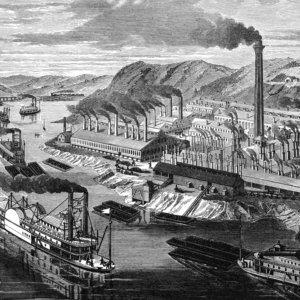Learning From Automation Anxiety of the Past
Much like during the industrial revolution, today’s automation anxiety is entirely justified. But history shows us that the real challenge lies in the sphere of policy, not technology.
Topics
On the night of April 24, 1907, New York’s lamplighters left the lights out and went on strike. The 25,000 gaslights that normally kept the streets of Manhattan bright at night were never lit. As it grew darker, complaints from impatient New Yorkers to the local police poured in, but with little effect. Even by 9 p.m., the only bright public spots were a few transverse roads in Central Park, which had been equipped with electric streetlights.
Those who took up work as lamplighters that year were unlucky. Their profession was almost 500 years old, but it would soon become a distant memory. Thomas Edison’s invention of the light bulb unquestionably made the world better and brighter. But from the viewpoint of the lamplighters, who lost their livelihoods as a consequence, nothing could be more natural than resistance. Indeed, when the municipality of Verviers in Belgium announced the switch to electricity, lamplighters smashed the electric lamps in fear of losing their jobs.
The stories of the lamplighters illustrate a simple point that is also relevant to the debate surrounding the future of artificial intelligence and jobs today. Even if a new technology will benefit society at large, there will be losers in the process, and at times even outright resistance, especially if the technology threatens people’s jobs and incomes.
Modern growth hinges on automation. It first took off with the British industrial revolution around 1770. Before then, there were hardly any machines to relieve workers of some of their burdens. It was only with the arrival of the factory system and the introduction of machinery in production that modern economies suddenly were able to produce much more with fewer people.
Although output per worker expanded by 46% between 1770 and 1840, the gains from growth didn’t find their way into the pockets of ordinary people. Real wages were stagnant or even falling for those in the lower ranks of the income distribution, as the jobs of adult craftsmen were replaced by machines and children who were working in the factories. The living-standard crisis of the industrial revolution famously led Friedrich Engels to conclude that the machine-owning industrialists “[grew] rich on the misery of the mass of wage earners.”
Get Updates on Transformative Leadership
Evidence-based resources that can help you lead your team more effectively, delivered to your inbox monthly.
Please enter a valid email address
Thank you for signing up
Much like during the industrial revolution, today’s automation anxiety is entirely justified. Workers today are no longer reaping the gains of progress.

